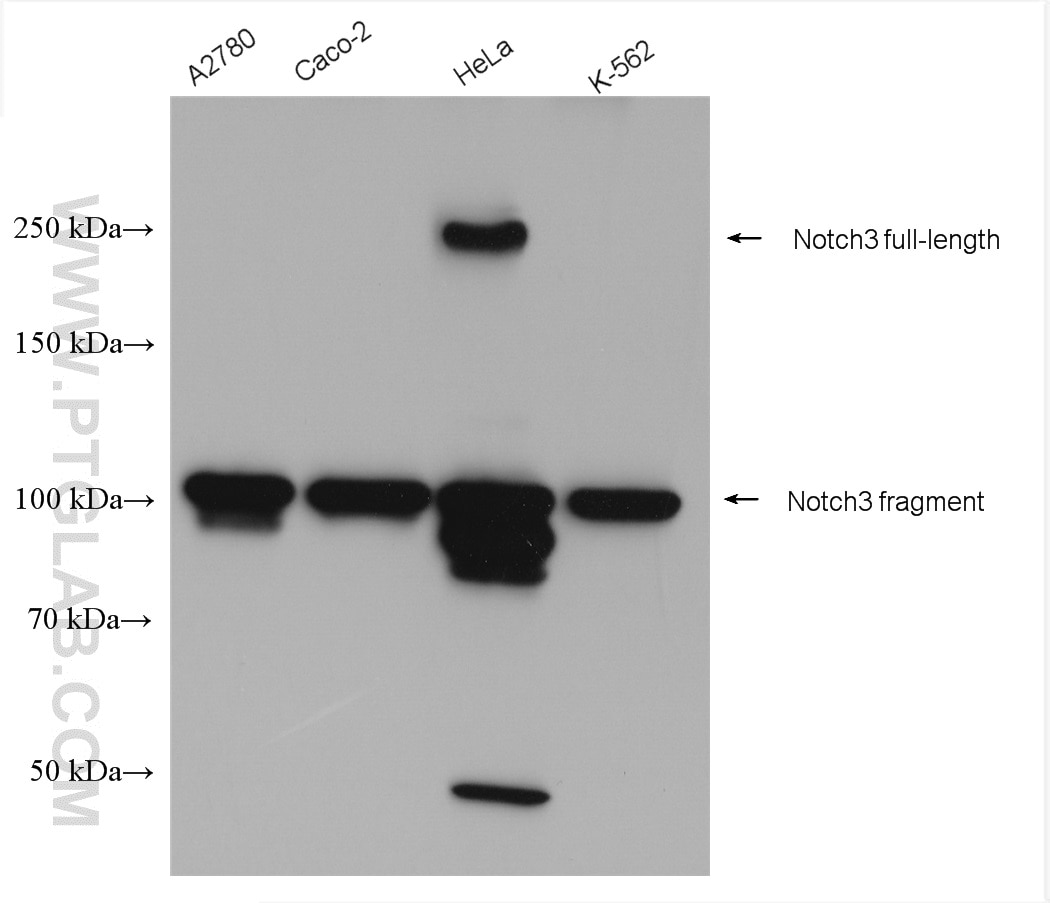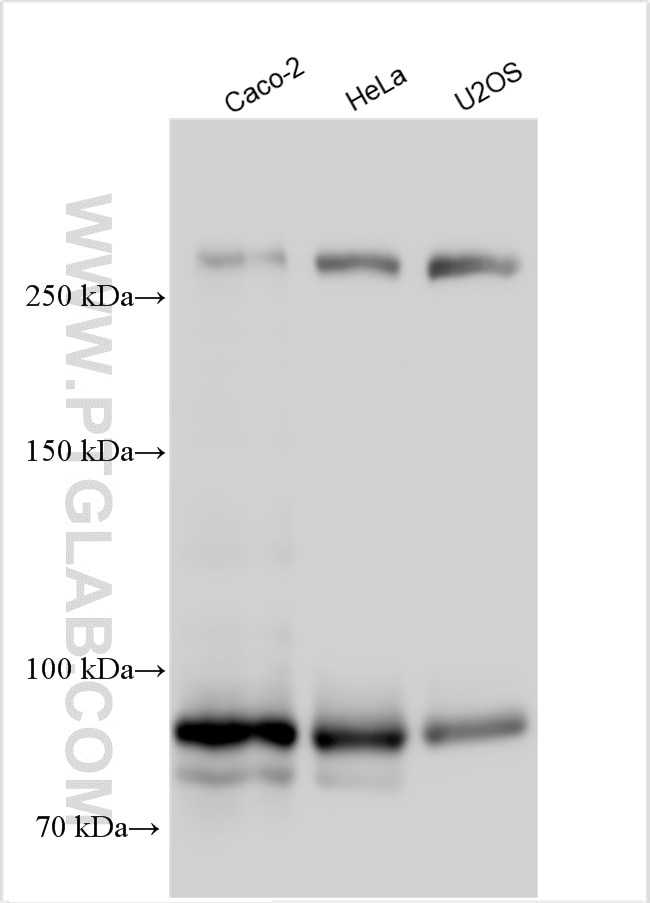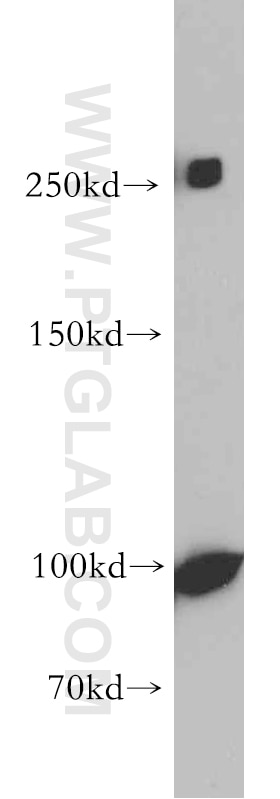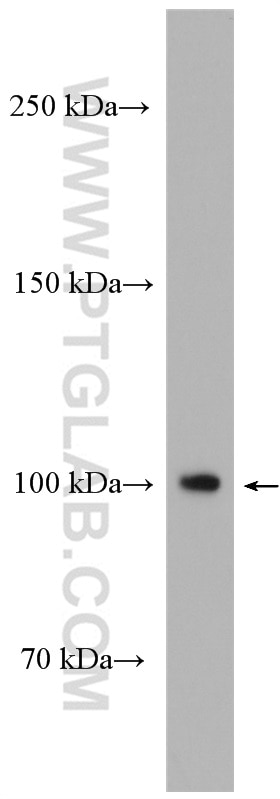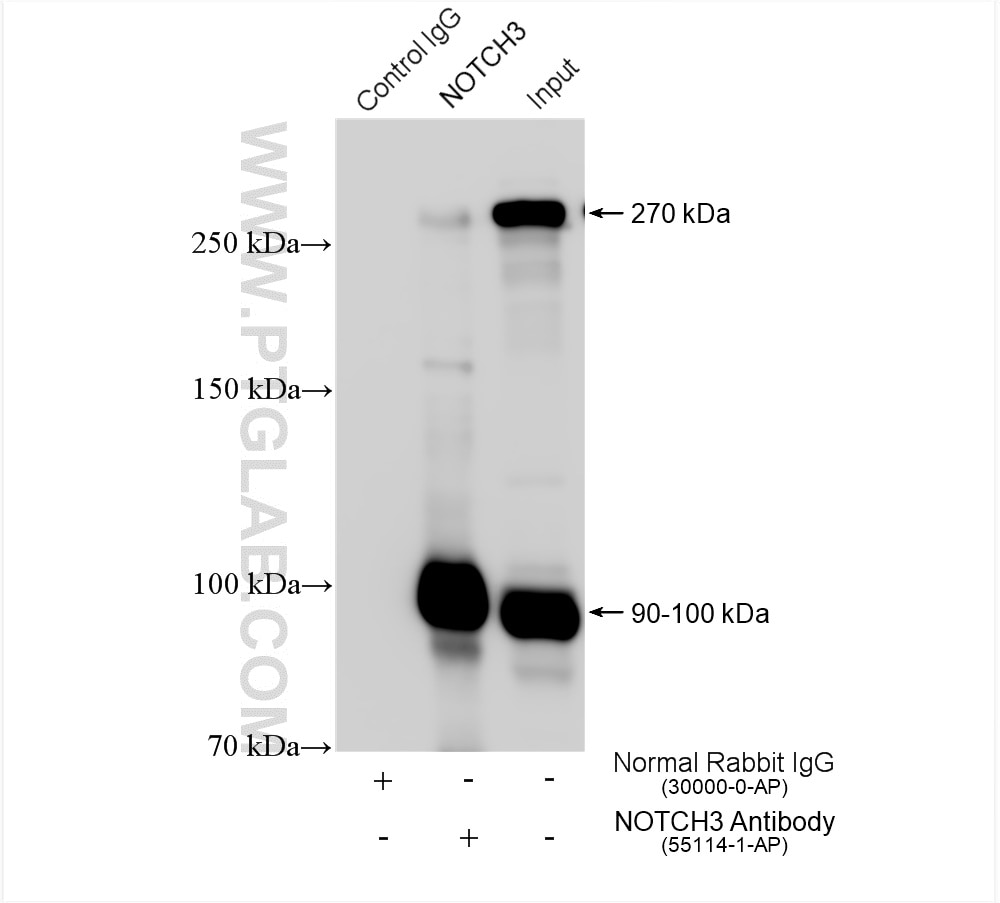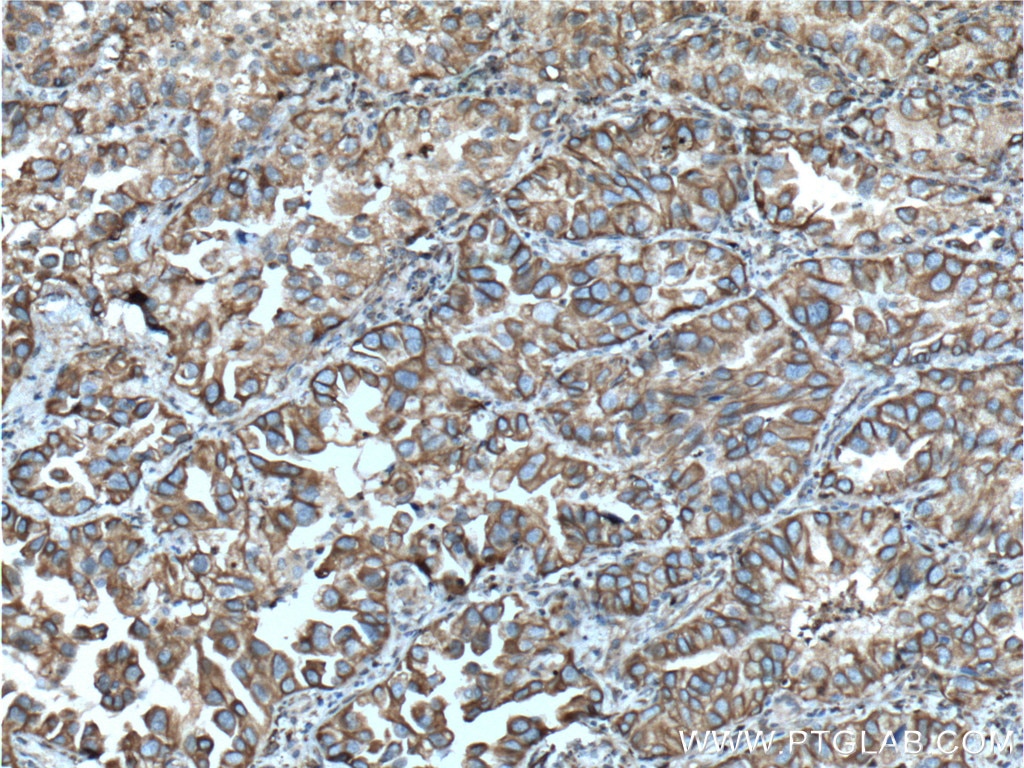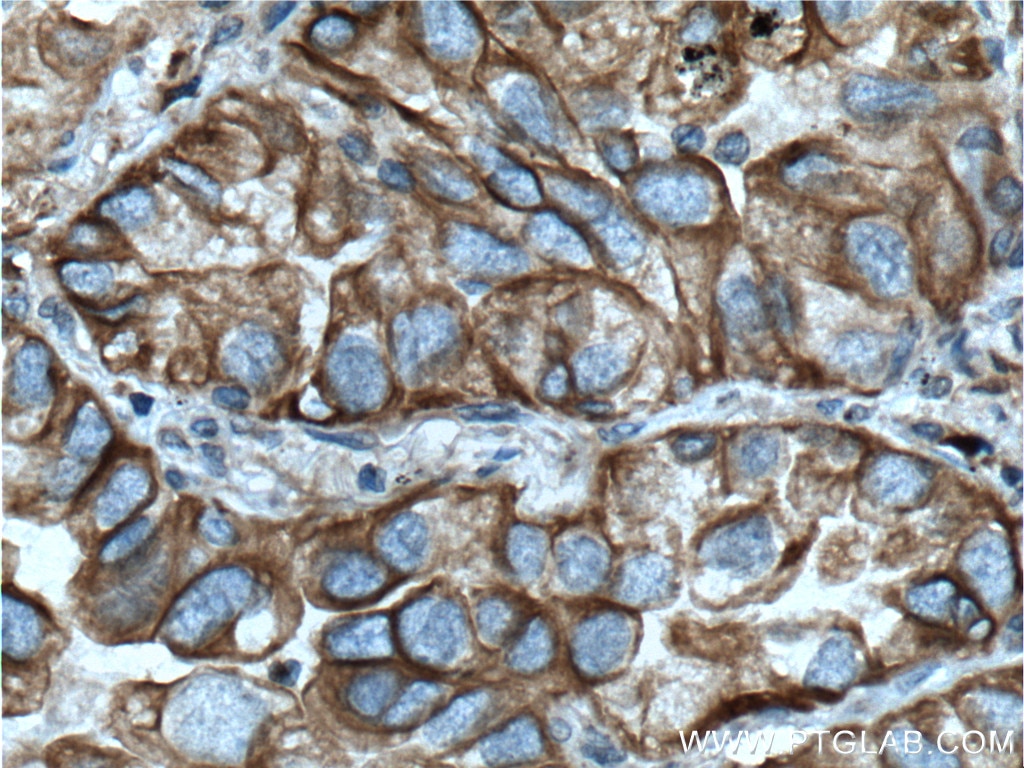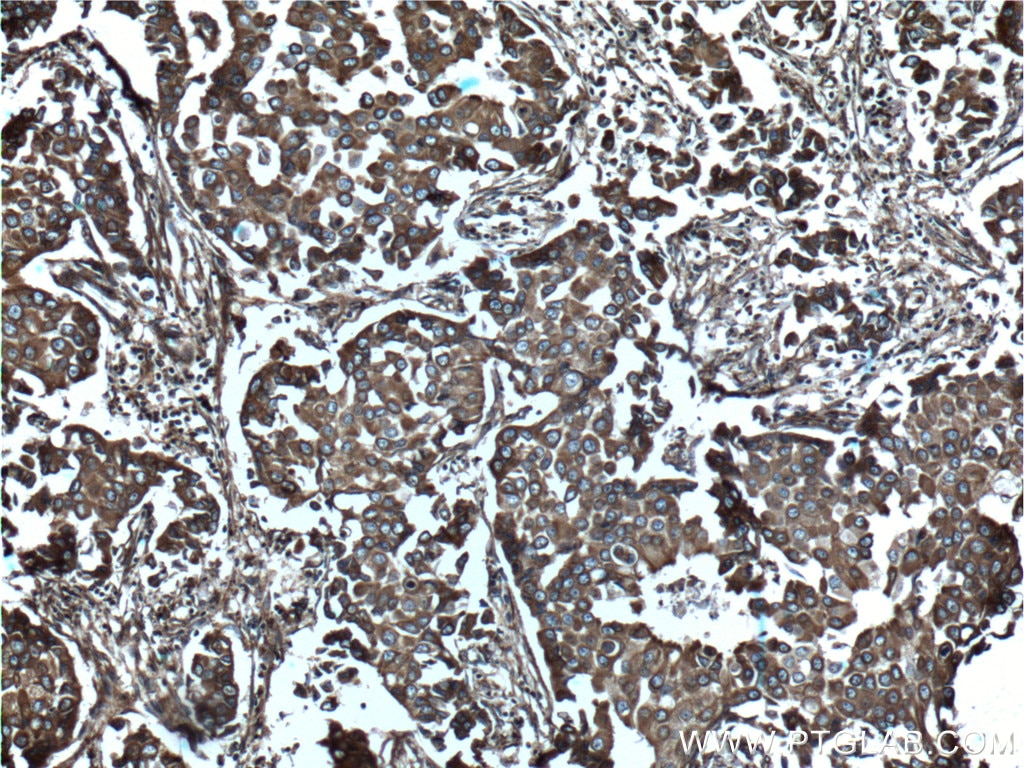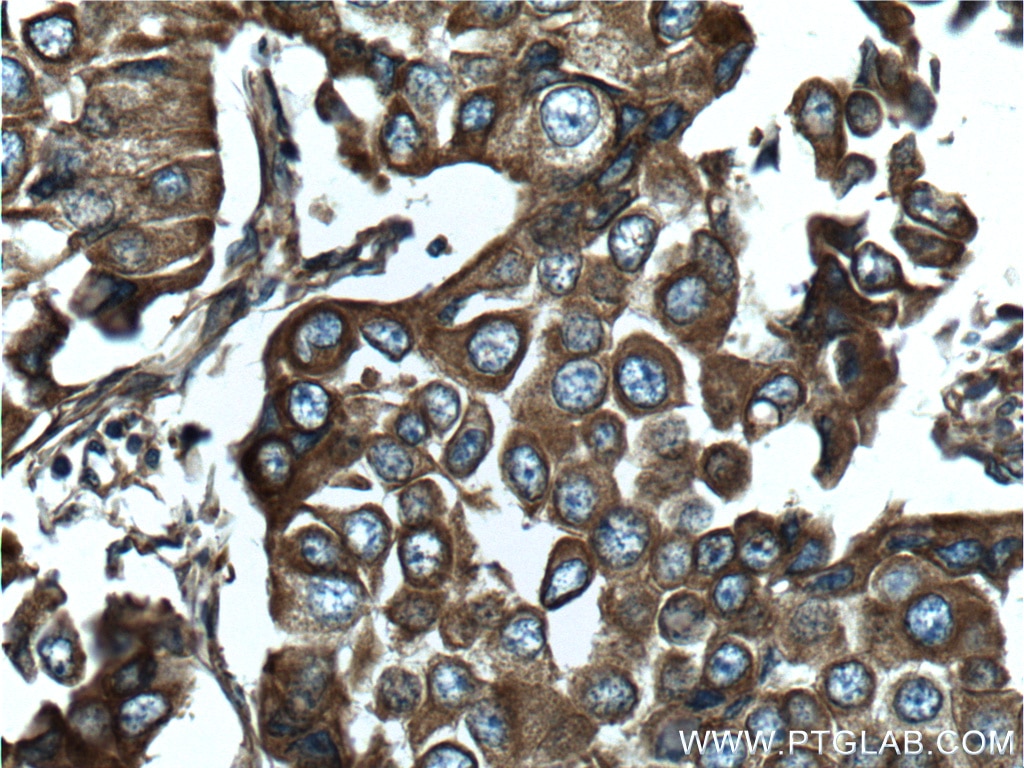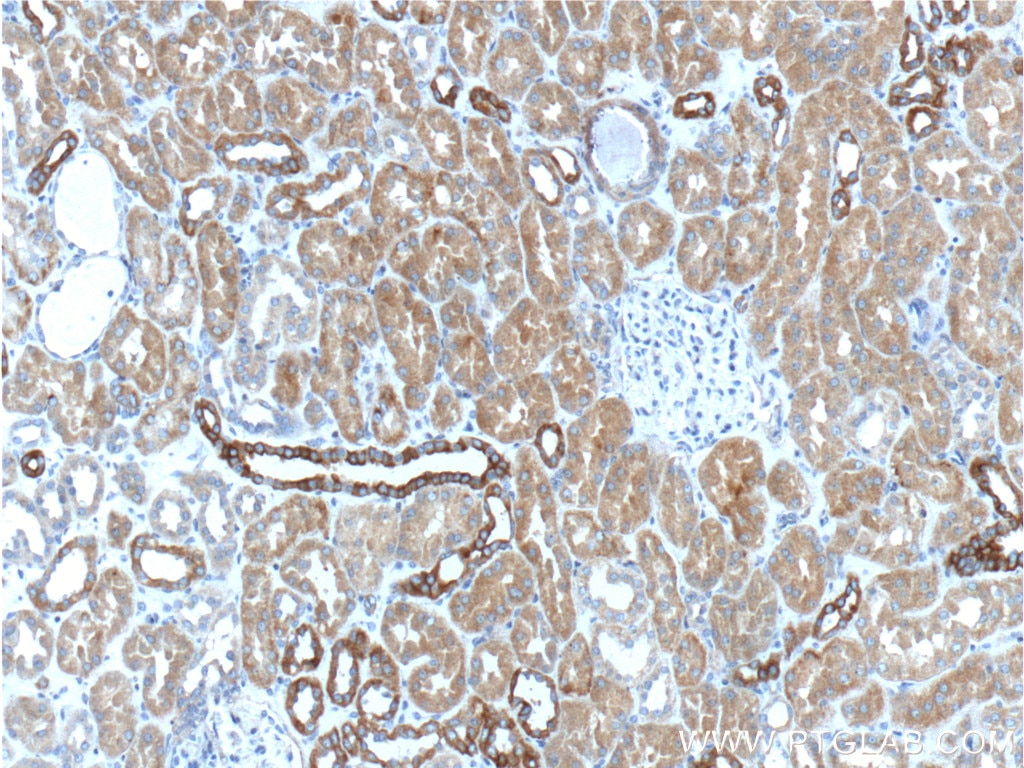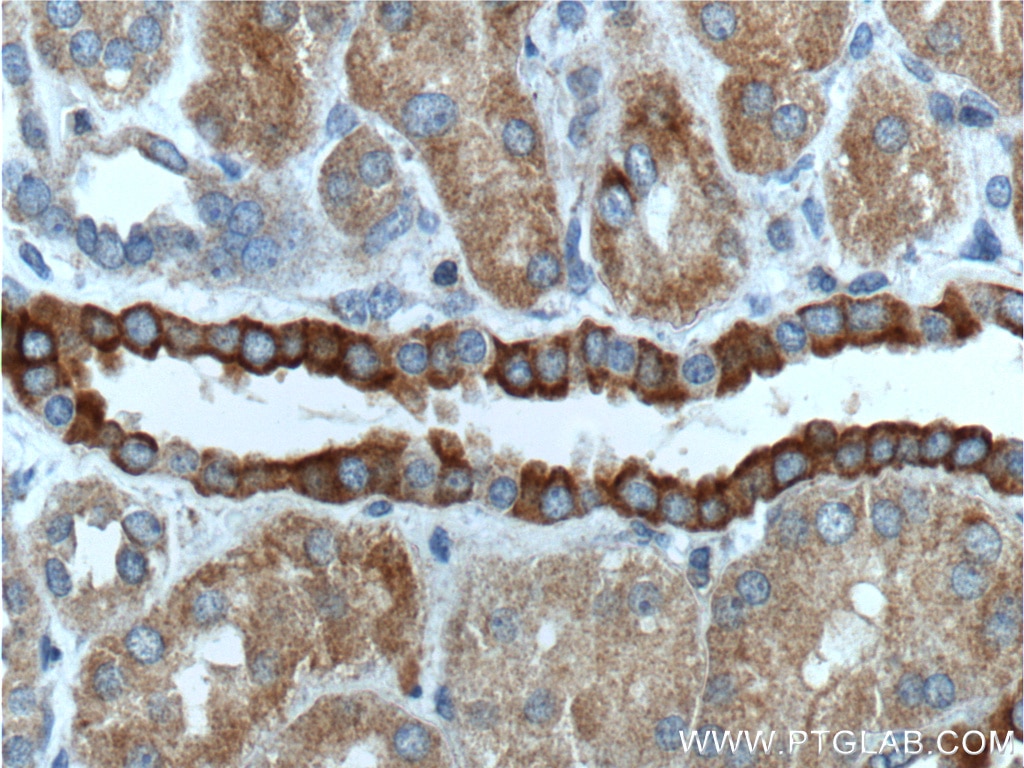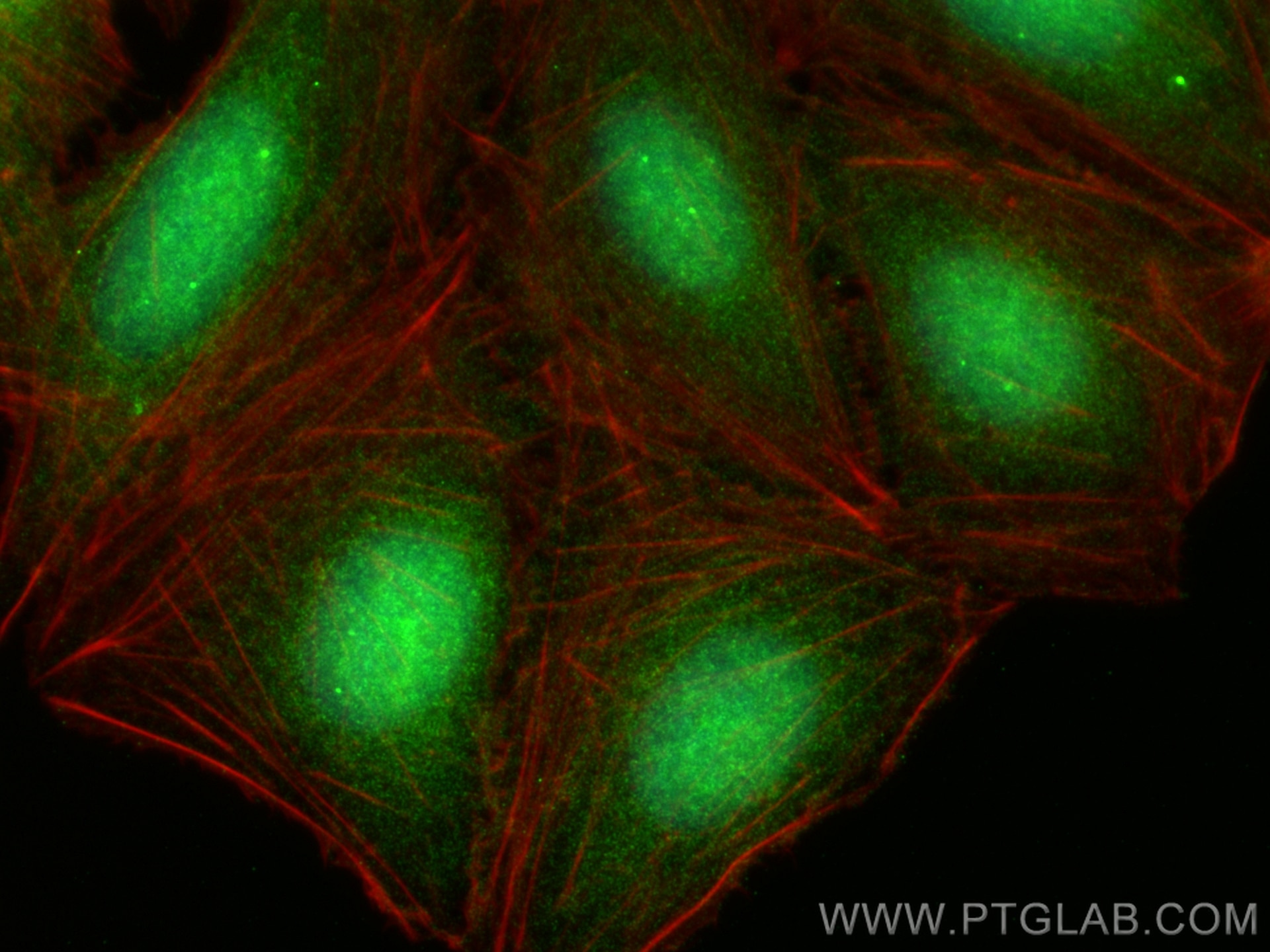Tested Applications
| Positive WB detected in | A2780 cells, Caco-2 cells, U2OS cells, COLO 320 cells, HeLa cells, K-562 cells |
| Positive IP detected in | HeLa cells |
| Positive IHC detected in | human lung cancer tissue, human breast cancer tissue, human kidney tissue Note: suggested antigen retrieval with TE buffer pH 9.0; (*) Alternatively, antigen retrieval may be performed with citrate buffer pH 6.0 |
| Positive IF/ICC detected in | U2OS cells |
Recommended dilution
| Application | Dilution |
|---|---|
| Western Blot (WB) | WB : 1:500-1:2000 |
| Immunoprecipitation (IP) | IP : 0.5-4.0 ug for 1.0-3.0 mg of total protein lysate |
| Immunohistochemistry (IHC) | IHC : 1:50-1:500 |
| Immunofluorescence (IF)/ICC | IF/ICC : 1:200-1:800 |
| It is recommended that this reagent should be titrated in each testing system to obtain optimal results. | |
| Sample-dependent, Check data in validation data gallery. | |
Published Applications
| KD/KO | See 4 publications below |
| WB | See 50 publications below |
| IHC | See 14 publications below |
| IF | See 10 publications below |
| IP | See 1 publications below |
Product Information
55114-1-AP targets NOTCH3 in WB, IHC, IF/ICC, IP, ELISA applications and shows reactivity with human, mouse samples.
| Tested Reactivity | human, mouse |
| Cited Reactivity | human, mouse, rat, goat |
| Host / Isotype | Rabbit / IgG |
| Class | Polyclonal |
| Type | Antibody |
| Immunogen |
Peptide Predict reactive species |
| Full Name | Notch homolog 3 (Drosophila) |
| Calculated Molecular Weight | 244 kDa |
| Observed Molecular Weight | 250-260 kDa, 100 kDa |
| GenBank Accession Number | NM_000435 |
| Gene Symbol | NOTCH3 |
| Gene ID (NCBI) | 4854 |
| RRID | AB_10858393 |
| Conjugate | Unconjugated |
| Form | Liquid |
| Purification Method | Antigen affinity purification |
| UNIPROT ID | Q9UM47 |
| Storage Buffer | PBS with 0.02% sodium azide and 50% glycerol, pH 7.3. |
| Storage Conditions | Store at -20°C. Stable for one year after shipment. Aliquoting is unnecessary for -20oC storage. 20ul sizes contain 0.1% BSA. |
Background Information
NOTCH3 belongs to the NOTCH family. It functions as a receptor for membrane-bound ligands Jagged1, Jagged2 and Delta1 to regulate cell-fate determination. Upon ligand activation through the released notch intracellular domain (NICD) it forms a transcriptional activator complex with RBP-J kappa and activates genes of the enhancer of split locus. NOTCH3 affects the implementation of differentiation, proliferation and apoptotic programs. Defects in NOTCH3 are the cause of cerebral autosomal dominant arteriopathy with subcortical infarcts and leukoencephalopathy (CADASIL). The antibody is specific to NOTCH3. Notch3 is a single-pass type I membrane protein exposed at the cell surface as a heterodimer of 2321 amino acids. It is synthesized as a precursor with a molecular weight of ~280 kDa (Notch3 full-length), which is cleaved (S1 cleavage) into a 210 kDa extracellular fragment and a 97 kDa intracellular fragment (PMID: 21702048).
Protocols
| Product Specific Protocols | |
|---|---|
| IF protocol for NOTCH3 antibody 55114-1-AP | Download protocol |
| IHC protocol for NOTCH3 antibody 55114-1-AP | Download protocol |
| IP protocol for NOTCH3 antibody 55114-1-AP | Download protocol |
| WB protocol for NOTCH3 antibody 55114-1-AP | Download protocol |
| Standard Protocols | |
|---|---|
| Click here to view our Standard Protocols |
Publications
| Species | Application | Title |
|---|---|---|
Cell Metab Mitochondrial Dynamics Is Critical for the Full Pluripotency and Embryonic Developmental Potential of Pluripotent Stem Cells. | ||
Sci Transl Med JAGGED-NOTCH3 signaling in vascular remodeling in pulmonary arterial hypertension. | ||
Mol Ther METTL3-mediated m6A modification of TIMP2 mRNA promotes podocyte injury in diabetic nephropathy. | ||
Cancer Res Manic fringe promotes a claudin-low breast cancer phenotype through notch-mediated PIK3CG induction. | ||
Oncogene Notch3 promotes prostate cancer-induced bone lesion development via MMP-3.
|
Reviews
The reviews below have been submitted by verified Proteintech customers who received an incentive for providing their feedback.
FH Nikolett (Verified Customer) (10-14-2025) | AB works well for Western Blott application on human lung cancer cell lines after overnight incubation.
|

